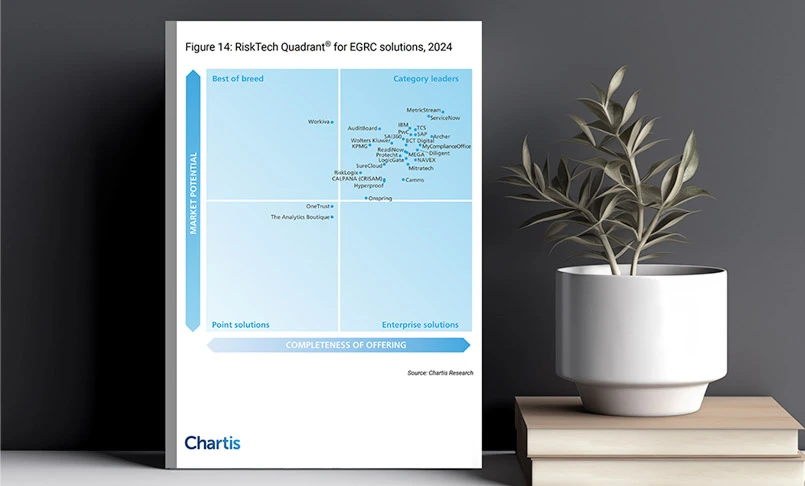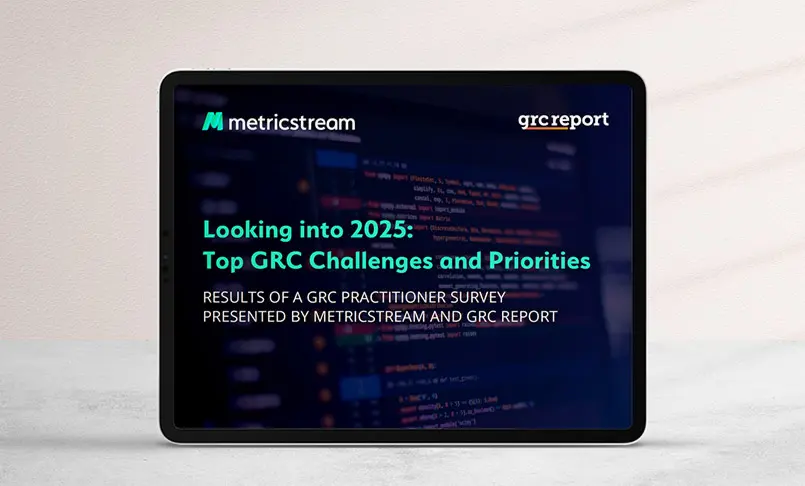Introduction
In today’s digital landscape, IT compliance audits are essential for safeguarding sensitive data, ensuring regulatory adherence, and building trust with customers and stakeholders. With various IT compliance audit tools tailored to different industries and security needs, businesses are able to implement standards and practices that protect data while minimizing risks.
Key Takeaways
- An IT compliance audit is a way by which organizations evaluate whether their information technology systems, processes, and practices adhere to relevant laws, regulations, standards, and internal policies.
- There are many types of IT compliance audits that help organizations maintain secure and compliant environments, depending on specific needs, industry standards, and regulatory frameworks.
- The scope of an IT compliance audit needs to be customized based on the organization’s specific regulatory obligations, risk profile, and internal policies. A well-defined scope ensures the audit covers all necessary areas to protect against security risks and ensure compliance.
- Following a step-by-step IT compliance audit process helps organizations achieve and maintain compliance, safeguard data, and improve their overall security posture.
What is an IT Compliance Audit?
An IT compliance audit is a way by which organizations evaluate whether their information technology systems, processes, and practices adhere to relevant laws, regulations, standards, and internal policies. The IT compliance audit process ensures that the organization is compliant with regulations that may include data privacy laws, industry standards, or security frameworks. They’re essential in regulated industries like finance and healthcare and are becoming more common across other sectors as data privacy concerns increase.
Types of IT Compliance Audits
There are many types of IT compliance audits, each tailored to specific regulatory standards, industries, or operational needs. Here are some common types:
- Regulatory Compliance Audits These audits verify compliance with external regulations that apply to specific industries or regions, such as GDPR, HIPAA, SOX (Sarbanes-Oxley), or PCI-DSS.
- Internal IT Compliance Audits These audits evaluate compliance with internal policies and industry standards, typically as a proactive measure to avoid regulatory issues.
- Cybersecurity Audits These audits focus on the security aspects of IT compliance, ensuring that organizations are following best practices to prevent cyber threats. They often align with frameworks like ISO 27001 or NIST.
- Vendor and Third-Party Compliance Audits Organizations that rely on third-party vendors often conduct these audits to ensure vendors are compliant with data protection and security policies.
- Operational Compliance Audits These audits assess how well the IT systems and processes align with an organization’s operational policies and standards, ensuring processes are standardized and efficient.
- Data Privacy Audits Data privacy audits focus on how personal and sensitive data is collected, stored, processed, and shared.
- Cloud Compliance Audits For organizations using cloud services, cloud compliance audits assess whether cloud infrastructure complies with regulatory standards and security requirements.
- Network and Infrastructure Compliance Audits These audits focus on the physical and logical infrastructure, such as network devices, servers, and other IT assets.
- Business Continuity and Disaster Recovery (BC/DR) Audits These audits review an organization’s disaster recovery plans and business continuity procedures, ensuring that critical IT systems can be restored quickly after a disruption.
What is the Scope of an IT Compliance Audit?
The scope of an IT compliance audit outlines the specific areas, systems, policies, and processes that will be evaluated to ensure compliance across departments. It can vary depending on the organization’s industry, the specific regulations applicable, and the audit’s objectives.
Here’s a breakdown of what a typical IT compliance audit checklist might include:
- Data Protection and Privacy This includes data storage and encryption, data access control, and data retention and disposal.
- Network Security This includes firewall and intrusion detection systems (IDS), network monitoring and logging, and remote access and VPNs.
- Identity and Access Management (IAM) This includes user authentication and authorization, role-based access controls (RBAC), and privilege access management (PAM).
- Cybersecurity Policies and Procedures This includes security policies, incident response and recovery plans, and vulnerability management.
- Compliance with Specific Regulations and Standards This includes regulatory frameworks like GDPR, HIPAA etc. and industry standards like ISO 27001 and NIST.
- Third-Party and Vendor Compliance This includes vendor risk management and third-party access control.
- IT Asset Management This includes inventory of IT assets and hardware and software licensing.
- Physical Security This includes physical access controls and environmental controls.
What is an Example of an IT Compliance Audit?
Here are some examples of common IT compliance audits that organizations may undertake, each aimed at meeting specific regulatory or industry standards:
- GDPR Compliance Audit: Ensures compliance with the General Data Protection Regulation (GDPR), which governs data protection and privacy for EU citizens.
- HIPAA Compliance Audit: Ensures healthcare organizations comply with the Health Insurance Portability and Accountability Act (HIPAA), which governs the protection of patient health information (PHI).
- PCI-DSS Compliance Audit: Verifies that an organization handling payment card transactions is compliant with the Payment Card Industry Data Security Standard (PCI-DSS).
- SOX (Sarbanes-Oxley) Compliance Audit: Confirms that publicly traded companies have reliable internal controls over financial reporting, in accordance with the Sarbanes-Oxley Act (SOX).
- ISO 27001 Compliance Audit: Assesses compliance with ISO 27001, an international standard for information security management.
Importance of IT Compliance Audits
An IT compliance audit is essential for organizations to ensure they are meeting legal, regulatory, and industry standards for data security and operational practices. Compliance with standards like GDPR, HIPAA, or PCI-DSS is often mandatory in regulated sectors, and failure to comply can lead to substantial fines, legal action, and reputational damage.
By conducting regular audits, organizations can proactively identify and address potential security vulnerabilities, protect sensitive information, and mitigate the risk of data breaches.
In addition to meeting regulatory requirements, IT compliance audits build trust with customers, partners, and stakeholders by demonstrating a commitment to data protection and security.
Audits provide an opportunity to assess and strengthen security controls, optimize internal processes, and improve data handling practices. As a result, IT compliance audits not only protect organizations from external threats but also enhance their overall operational efficiency and integrity.
How to Conduct an IT Compliance Audit (Step-by-Step)?
Here’s a step-by-step guide to conducting an IT compliance audit:
Step 1: Define the Scope and Objectives
- Determine the purpose of the audit.
- Identify the specific regulations, standards, or policies that need to be assessed.
- Define the areas to be covered.
Step 2: Assemble the Audit Team and Gather Resources
- Identify and assign roles within the audit team.
- Gather all necessary documents.
- Prepare tools for monitoring, logging, and scanning.
Step 3: Conduct a Risk Assessment
- Identify and assess risks to IT systems, data, and compliance areas.
- Prioritize the areas with the highest risks so the audit focuses on addressing the most critical concerns.
Step 4: Evaluate Controls and Gather Evidence
- Review existing security controls to ensure they align with compliance requirements.
- Collect evidence by documenting policies, monitoring system activity, examining logs, and interviewing relevant personnel.
- Use automated tools as needed to scan for vulnerabilities and gather relevant data.
Step 5: Identify Gaps and Document Findings
- Analyze the gathered evidence to identify any gaps.
- Record instances of non-compliance or areas for improvement and determine their potential impact.
- Document all findings in detail.
Step 6: Prepare the Audit Report
- Create a comprehensive audit report.
- Include specific recommendations for remediation of non-compliance issues.
- Ensure the report is clear and actionable.
Step 7: Remediate and Implement Improvements
- Work with the relevant teams to implement corrective actions for non-compliance issues.
- Establish timelines for remediation and assign responsibilities for each action item.
Step 8: Conduct Follow-Up and Continuous Monitoring
- Schedule a follow-up audit or review to confirm that remediation efforts are completed and effective.
- Set up continuous monitoring for high-risk areas.
- Regularly review and update audit practices.
Adhering to the right IT compliance frameworks is not just a regulatory necessity but a strategic approach to securing and protecting valuable data assets. By implementing a comprehensive IT compliance audit process, organizations can build a robust security foundation that enhances trust, reduces risk, and supports long-term business goals. As the digital landscape continues to evolve, staying compliant will remain a key factor in maintaining a competitive edge and ensuring resilience against cybersecurity threats.
Frequently Asked Questions
Who performs an IT compliance audit?
An IT compliance audit is typically performed by internal audit teams, external auditors, or specialized compliance professionals with expertise in regulatory standards, data security, and IT controls.
What happens if you fail an IT compliance audit?
Failing an IT compliance audit can lead to penalties, legal consequences, reputational damage, and required corrective actions to address compliance gaps and improve security controls.
What are the types of IT Compliance Frameworks?
Some common types of IT compliance frameworks used during audits are:
- GDPR (General Data Protection Regulation)
- HIPAA (Health Insurance Portability and Accountability Act)
- PCI-DSS (Payment Card Industry Data Security Standard)
- SOX (Sarbanes-Oxley Act) ISO/IEC 27001 (Information Security Management)
- NIST (National Institute of Standards and Technology) Cybersecurity Framework
- COBIT (Control Objectives for Information and Related Technologies)
- CCPA (California Consumer Privacy Act)
- FedRAMP (Federal Risk and Authorization Management Program)
- SOC 2 (System and Organization Controls)
Why MetricStream?
With MetricStream’s CyberGRC solutions, including IT and Cyber Compliance management and IT and Cyber Policy management enables IT and Cyber Compliance Management software, organizations have access to a consolidated framework that can help implement and keep track of compliance with any IT regulations. For more information, request a personalized demo.
In today’s digital landscape, IT compliance audits are essential for safeguarding sensitive data, ensuring regulatory adherence, and building trust with customers and stakeholders. With various IT compliance audit tools tailored to different industries and security needs, businesses are able to implement standards and practices that protect data while minimizing risks.
- An IT compliance audit is a way by which organizations evaluate whether their information technology systems, processes, and practices adhere to relevant laws, regulations, standards, and internal policies.
- There are many types of IT compliance audits that help organizations maintain secure and compliant environments, depending on specific needs, industry standards, and regulatory frameworks.
- The scope of an IT compliance audit needs to be customized based on the organization’s specific regulatory obligations, risk profile, and internal policies. A well-defined scope ensures the audit covers all necessary areas to protect against security risks and ensure compliance.
- Following a step-by-step IT compliance audit process helps organizations achieve and maintain compliance, safeguard data, and improve their overall security posture.
An IT compliance audit is a way by which organizations evaluate whether their information technology systems, processes, and practices adhere to relevant laws, regulations, standards, and internal policies. The IT compliance audit process ensures that the organization is compliant with regulations that may include data privacy laws, industry standards, or security frameworks. They’re essential in regulated industries like finance and healthcare and are becoming more common across other sectors as data privacy concerns increase.
There are many types of IT compliance audits, each tailored to specific regulatory standards, industries, or operational needs. Here are some common types:
- Regulatory Compliance Audits These audits verify compliance with external regulations that apply to specific industries or regions, such as GDPR, HIPAA, SOX (Sarbanes-Oxley), or PCI-DSS.
- Internal IT Compliance Audits These audits evaluate compliance with internal policies and industry standards, typically as a proactive measure to avoid regulatory issues.
- Cybersecurity Audits These audits focus on the security aspects of IT compliance, ensuring that organizations are following best practices to prevent cyber threats. They often align with frameworks like ISO 27001 or NIST.
- Vendor and Third-Party Compliance Audits Organizations that rely on third-party vendors often conduct these audits to ensure vendors are compliant with data protection and security policies.
- Operational Compliance Audits These audits assess how well the IT systems and processes align with an organization’s operational policies and standards, ensuring processes are standardized and efficient.
- Data Privacy Audits Data privacy audits focus on how personal and sensitive data is collected, stored, processed, and shared.
- Cloud Compliance Audits For organizations using cloud services, cloud compliance audits assess whether cloud infrastructure complies with regulatory standards and security requirements.
- Network and Infrastructure Compliance Audits These audits focus on the physical and logical infrastructure, such as network devices, servers, and other IT assets.
- Business Continuity and Disaster Recovery (BC/DR) Audits These audits review an organization’s disaster recovery plans and business continuity procedures, ensuring that critical IT systems can be restored quickly after a disruption.
The scope of an IT compliance audit outlines the specific areas, systems, policies, and processes that will be evaluated to ensure compliance across departments. It can vary depending on the organization’s industry, the specific regulations applicable, and the audit’s objectives.
Here’s a breakdown of what a typical IT compliance audit checklist might include:
- Data Protection and Privacy This includes data storage and encryption, data access control, and data retention and disposal.
- Network Security This includes firewall and intrusion detection systems (IDS), network monitoring and logging, and remote access and VPNs.
- Identity and Access Management (IAM) This includes user authentication and authorization, role-based access controls (RBAC), and privilege access management (PAM).
- Cybersecurity Policies and Procedures This includes security policies, incident response and recovery plans, and vulnerability management.
- Compliance with Specific Regulations and Standards This includes regulatory frameworks like GDPR, HIPAA etc. and industry standards like ISO 27001 and NIST.
- Third-Party and Vendor Compliance This includes vendor risk management and third-party access control.
- IT Asset Management This includes inventory of IT assets and hardware and software licensing.
- Physical Security This includes physical access controls and environmental controls.
Here are some examples of common IT compliance audits that organizations may undertake, each aimed at meeting specific regulatory or industry standards:
- GDPR Compliance Audit: Ensures compliance with the General Data Protection Regulation (GDPR), which governs data protection and privacy for EU citizens.
- HIPAA Compliance Audit: Ensures healthcare organizations comply with the Health Insurance Portability and Accountability Act (HIPAA), which governs the protection of patient health information (PHI).
- PCI-DSS Compliance Audit: Verifies that an organization handling payment card transactions is compliant with the Payment Card Industry Data Security Standard (PCI-DSS).
- SOX (Sarbanes-Oxley) Compliance Audit: Confirms that publicly traded companies have reliable internal controls over financial reporting, in accordance with the Sarbanes-Oxley Act (SOX).
- ISO 27001 Compliance Audit: Assesses compliance with ISO 27001, an international standard for information security management.
An IT compliance audit is essential for organizations to ensure they are meeting legal, regulatory, and industry standards for data security and operational practices. Compliance with standards like GDPR, HIPAA, or PCI-DSS is often mandatory in regulated sectors, and failure to comply can lead to substantial fines, legal action, and reputational damage.
By conducting regular audits, organizations can proactively identify and address potential security vulnerabilities, protect sensitive information, and mitigate the risk of data breaches.
In addition to meeting regulatory requirements, IT compliance audits build trust with customers, partners, and stakeholders by demonstrating a commitment to data protection and security.
Audits provide an opportunity to assess and strengthen security controls, optimize internal processes, and improve data handling practices. As a result, IT compliance audits not only protect organizations from external threats but also enhance their overall operational efficiency and integrity.
Here’s a step-by-step guide to conducting an IT compliance audit:
Step 1: Define the Scope and Objectives
- Determine the purpose of the audit.
- Identify the specific regulations, standards, or policies that need to be assessed.
- Define the areas to be covered.
Step 2: Assemble the Audit Team and Gather Resources
- Identify and assign roles within the audit team.
- Gather all necessary documents.
- Prepare tools for monitoring, logging, and scanning.
Step 3: Conduct a Risk Assessment
- Identify and assess risks to IT systems, data, and compliance areas.
- Prioritize the areas with the highest risks so the audit focuses on addressing the most critical concerns.
Step 4: Evaluate Controls and Gather Evidence
- Review existing security controls to ensure they align with compliance requirements.
- Collect evidence by documenting policies, monitoring system activity, examining logs, and interviewing relevant personnel.
- Use automated tools as needed to scan for vulnerabilities and gather relevant data.
Step 5: Identify Gaps and Document Findings
- Analyze the gathered evidence to identify any gaps.
- Record instances of non-compliance or areas for improvement and determine their potential impact.
- Document all findings in detail.
Step 6: Prepare the Audit Report
- Create a comprehensive audit report.
- Include specific recommendations for remediation of non-compliance issues.
- Ensure the report is clear and actionable.
Step 7: Remediate and Implement Improvements
- Work with the relevant teams to implement corrective actions for non-compliance issues.
- Establish timelines for remediation and assign responsibilities for each action item.
Step 8: Conduct Follow-Up and Continuous Monitoring
- Schedule a follow-up audit or review to confirm that remediation efforts are completed and effective.
- Set up continuous monitoring for high-risk areas.
- Regularly review and update audit practices.
Adhering to the right IT compliance frameworks is not just a regulatory necessity but a strategic approach to securing and protecting valuable data assets. By implementing a comprehensive IT compliance audit process, organizations can build a robust security foundation that enhances trust, reduces risk, and supports long-term business goals. As the digital landscape continues to evolve, staying compliant will remain a key factor in maintaining a competitive edge and ensuring resilience against cybersecurity threats.
Who performs an IT compliance audit?
An IT compliance audit is typically performed by internal audit teams, external auditors, or specialized compliance professionals with expertise in regulatory standards, data security, and IT controls.
What happens if you fail an IT compliance audit?
Failing an IT compliance audit can lead to penalties, legal consequences, reputational damage, and required corrective actions to address compliance gaps and improve security controls.
What are the types of IT Compliance Frameworks?
Some common types of IT compliance frameworks used during audits are:
- GDPR (General Data Protection Regulation)
- HIPAA (Health Insurance Portability and Accountability Act)
- PCI-DSS (Payment Card Industry Data Security Standard)
- SOX (Sarbanes-Oxley Act) ISO/IEC 27001 (Information Security Management)
- NIST (National Institute of Standards and Technology) Cybersecurity Framework
- COBIT (Control Objectives for Information and Related Technologies)
- CCPA (California Consumer Privacy Act)
- FedRAMP (Federal Risk and Authorization Management Program)
- SOC 2 (System and Organization Controls)
With MetricStream’s CyberGRC solutions, including IT and Cyber Compliance management and IT and Cyber Policy management enables IT and Cyber Compliance Management software, organizations have access to a consolidated framework that can help implement and keep track of compliance with any IT regulations. For more information, request a personalized demo.








